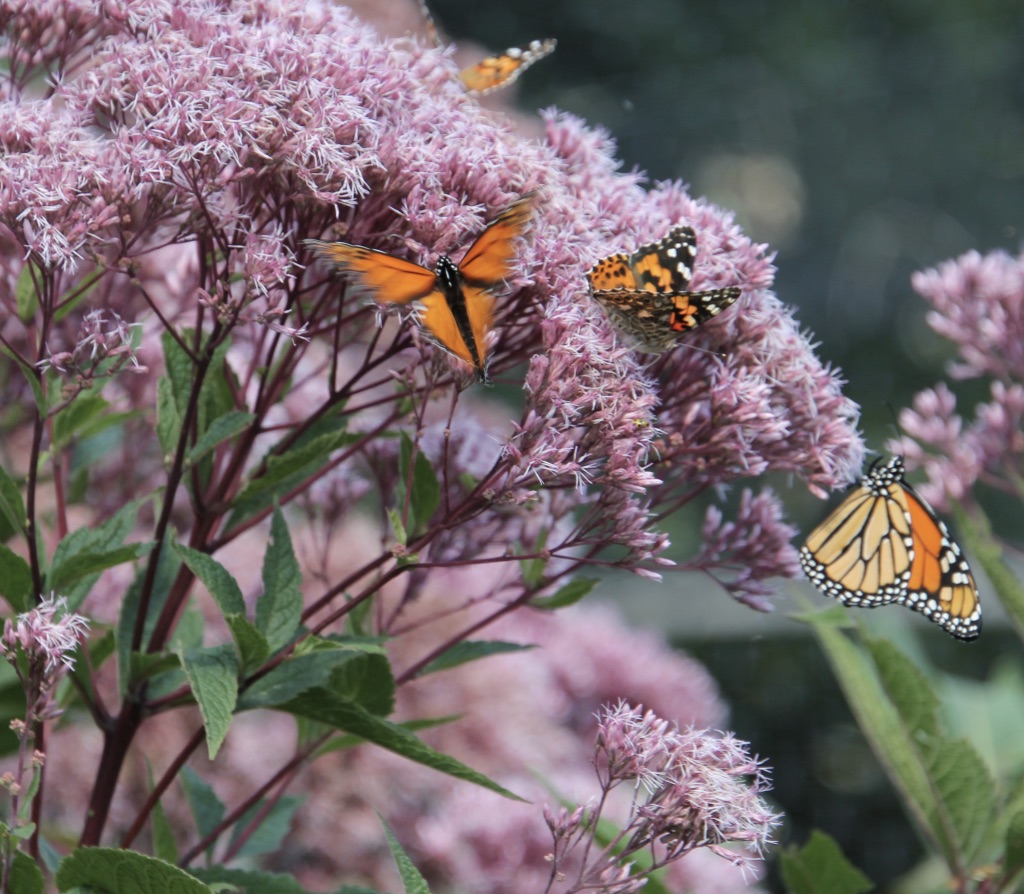Monarchs and Swallowtails
Three years ago, my husband Marschall began a new garden and new project.

After two years of being overwhelmed by weeds and insects, he gave up the vegetable garden and instead began to focus his energy and time on a butterfly garden in the hopes of attracting butterflies, bees and hummingbirds. He began by cultivating the land adjacent to the duck pond area, planting a few milkweed, bee’s balm and Joe Pye Weed plants. Each year he cultivates a bit more land, adding new plants and new species of plants to the garden. And each year these pollinator plants have done their job attracting Monarchs, Swallowtails and a myriad of other butterflies, bees and yes, hummingbirds.

But this year we added something different to the mix. At our town’s farmer’s market, we met Janie O’Connor, the butterfly lady. She talked to shoppers about butterflies, explaining why they are important, and how to raise them. She also sold butterfly cages—cages not to trap butterflies, but to give caterpillars a safe place to grow by providing milkweed and a safe haven to spin a chrysalis, to develop and nurture within the chrysalis and, at last, emerge as Monarchs.

As of a few weeks ago, we had raised, nurtured and released thirty Monarchs. Each time a chrysalis turned from green to black, we held our breath as we watched and waited for the butterfly to emerge. Over several hours a butterfly unfurled its wings, then with wings expanded, it opened and shut its wings, pumping blood into them to gain strength. When the butterfly began moving up and down the sides of the cage, we knew it was time to release it.

Then we walked the cage to our back patio, lifted off the glass pie plate lid (previously put into place) and gently caught the butterfly in a pincer finger movement. Next, we placed it near one of our nectar filled flowers, so that as its proboscis emerged it would have food to give it m ore strength. Our job was now done, and with each release we wished the butterfly well, offering up a blessing and a prayer of thanksgiving. The transformation from a tiny speck to a caterpillar to a majestic butterfly is miraculous to witness.

Monarchs who lay their eggs during the summer only live about 8 short weeks, while those that migrate to Mexico will live over six months. Our first two groups have passed, leaving their offspring to make the journey south while our last group of 13 butterflies will be among those that head south.

Every time I pass the garden, I stop and watch the butterflies. There are dozens of them and not only Monarchs, but also Swallowtails, Viceroys, and White Cabbage butterflies. For now, the butterflies are still here, but given the early onset of cool temperatures, the changes in sun and light, they will soon be on their way. With a touch of pride tempered by sadness we wish them a safe journey.
